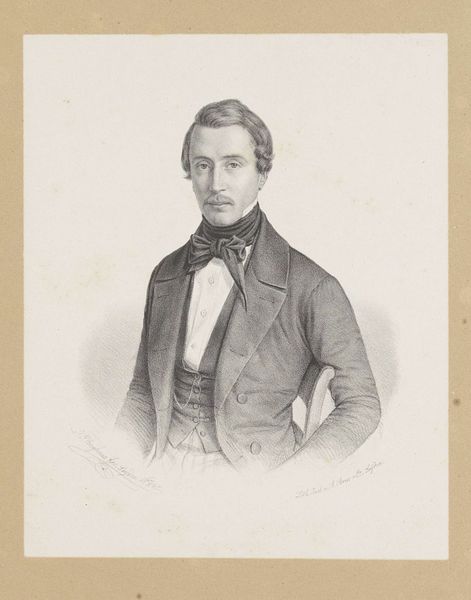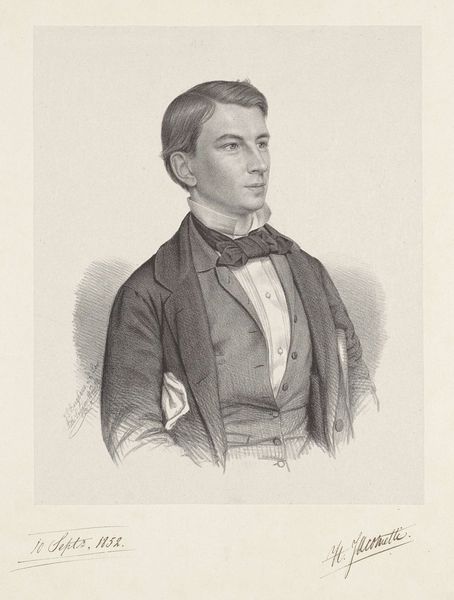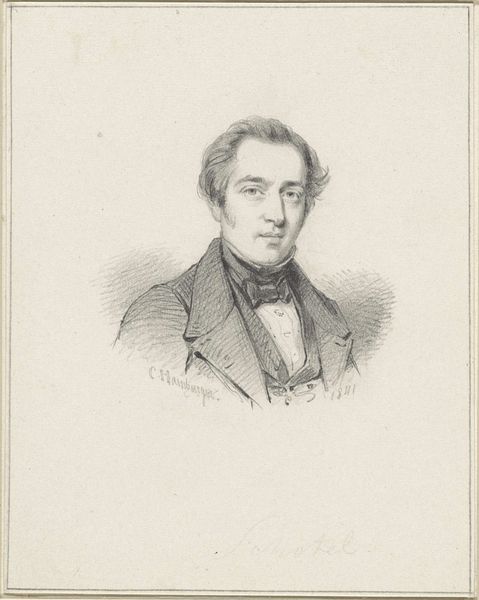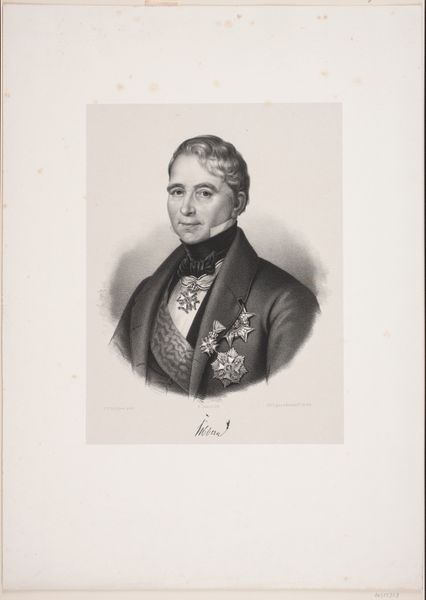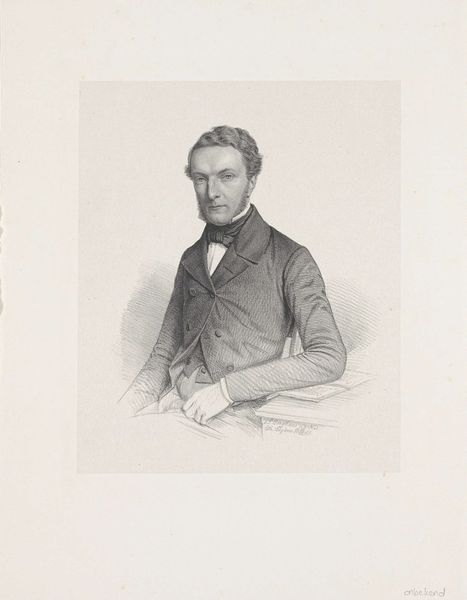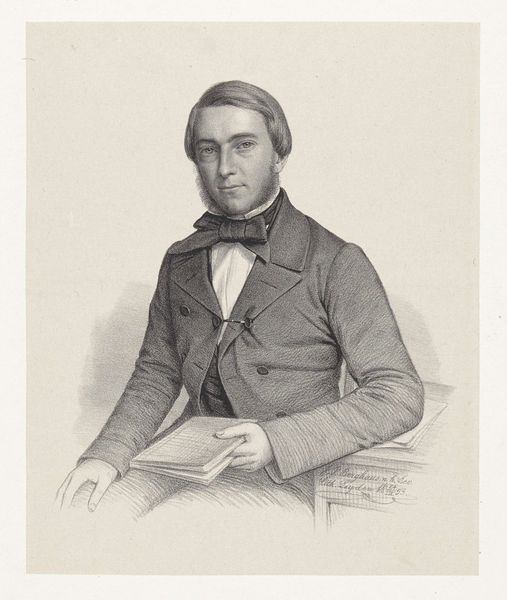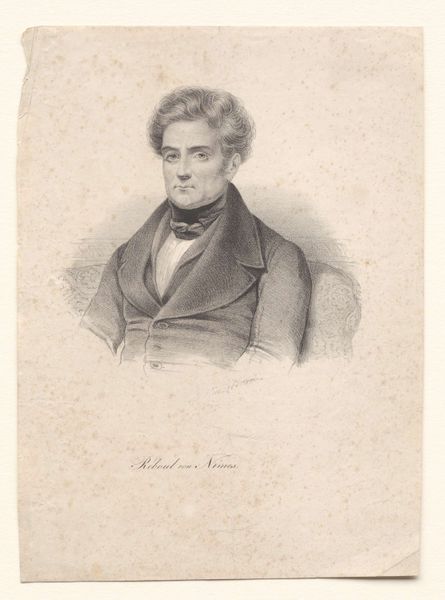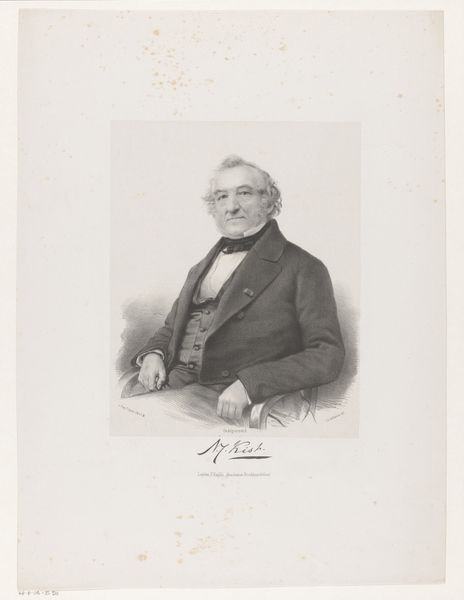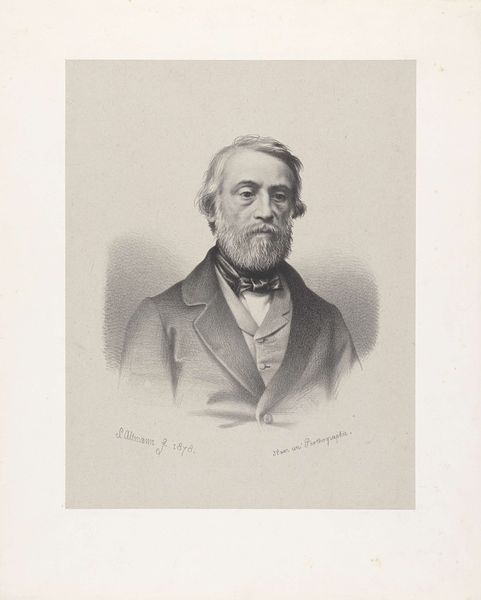
drawing, pencil
#
portrait
#
pencil drawn
#
drawing
#
caricature
#
pencil drawing
#
pencil
#
portrait drawing
#
academic-art
#
realism
Dimensions: height 475 mm, width 346 mm
Copyright: Rijks Museum: Open Domain
Curator: Here we have a work from possibly 1851 by Johann Peter Berghaus, a pencil drawing simply entitled, "Portret van C. T. van Meurs." It's currently held here at the Rijksmuseum. Editor: My initial reaction is how incredibly formal this feels, despite just being a drawing. The cross-hatching gives such depth to the gentleman's suit, and his posture screams authority. Curator: That formality speaks volumes, doesn't it? Consider the mid-19th century: portraiture, even in pencil, was about conveying status, reliability. The precision is almost aspirational in its commitment to realism. This imagery projects civic worthiness. Editor: It's fascinating how the artist used solely pencil to generate such richness. Note how Berghaus varies the marks to establish shadow, highlight, and the textural variety, too-- from the silky sheen of the lapel to the soft modeling of skin. This reveals remarkable talent. Curator: Exactly. And if we read beneath the surface, a more personal narrative could be present. A formal portrait certainly displays importance, but there's also the more immediate intention: How did Van Meurs want to be seen, and how did that sync with Berghaus’s style, the cultural cues available to him? We can read how identities are constructed and immortalized. Editor: Yes, and what does it mean that this man selected an artist capable of realistically reproducing details as opposed to a symbolic or more romanticised take of the self? Also the details really stand out: a hand resting upon the back of a chair, a subtle ring, his carefully coiffed hair. This level of detail also hints to me that Van Meurs himself possessed similar qualities. Curator: So much visual encoding at work! It encourages reflection upon not just Van Meurs himself, but how individuals sought validation within a precise social order. Even today, there is meaning layered beneath its formal technique. Editor: Precisely. Even now, this portrait still radiates the palpable mood of societal respect it embodied in its original time and context. I feel like a more complete person just having really looked at it closely with you. Curator: It certainly provides an opening for further reflection, a way of engaging history in the present. And considering this visual code we are privy to allows this portrait drawing to live and change with time and re-examination.
Comments
No comments
Be the first to comment and join the conversation on the ultimate creative platform.
